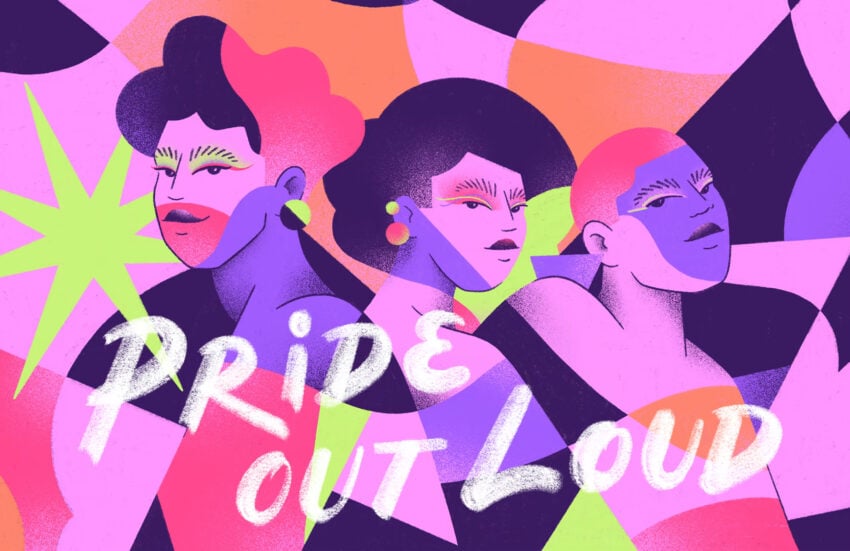Editor’s Note:
In this conversation with Carmela Caldart, the illustrator and animator opens up about how her art has evolved across different mediums, from illustration to animation, ceramics, and tattoos. She shares her journey of embracing new creative challenges and staying true to her personal expression, even as her work evolves with each project. Carmela talks about the balance between making art for herself and for her audience, the influences that shape her style, and how she continues to find new ways to push her creativity beyond the expected. It’s a glimpse into the mind of an artist who’s always searching for something new.
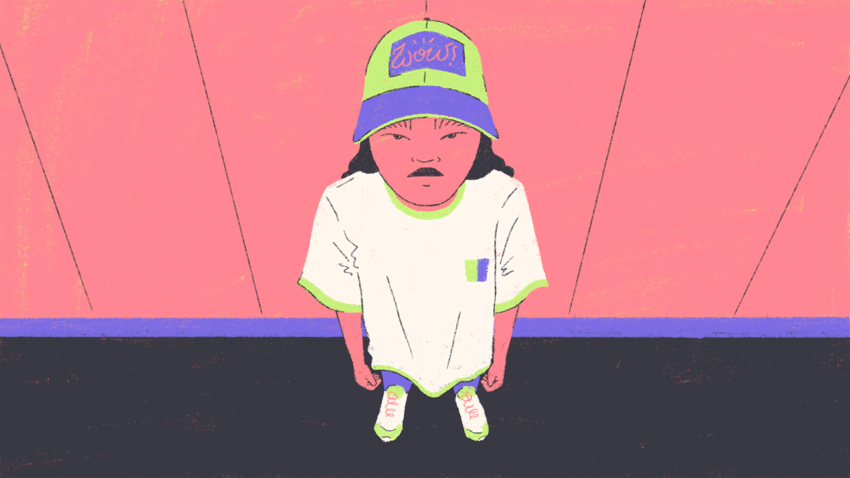
From Graphic Design to Multidisciplinary Art
First of all, tell me a little about yourself: what would you like people to know about you?
Well, I’m mostly an illustrator. I’m from Brazil, and nowadays I consider myself somewhat of a multidisciplinary artist. I do illustration, animation, ceramics, and I’ve started learning tattooing as well. I came to Barcelona about 7 years ago, and, well, I ended up staying.
I have to say I love your work, the colors you use, and your ceramics. I don’t know why, but there’s something about your ceramic pieces that fascinates me.
Oh, thank you, thank you! I love it.
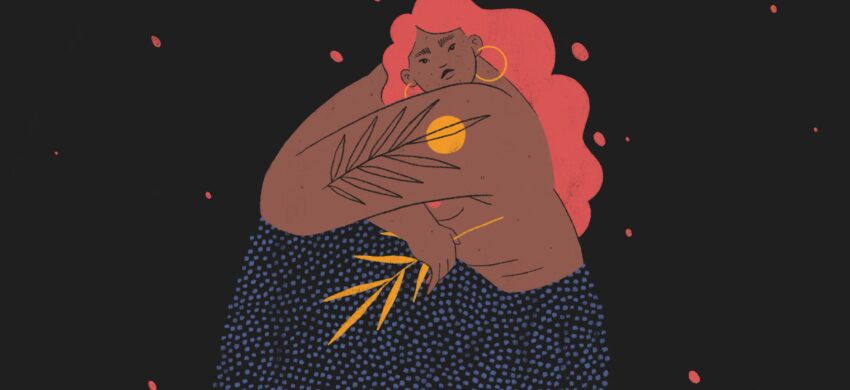
What got you hooked on the world of illustration, and how did you decide to explore animation as well? They’re such different things, and animation can feel intimidating at first.
Yes, totally. Technically, I actually studied graphic design. I think, like many of us, right? I’ve always drawn a lot, and when I was about to study illustration, I had a professor who told me, “It’s going to be really hard, and no one, no one makes it.” That scared me, so I went into graphic design to find a job. I worked as a designer for a while, but I realized I didn’t like it.
In the end, I came to Barcelona to do a master’s in illustration, and that’s when I started to understand better what could be done within illustration. There are so many things, so many paths, and from there, I began to experiment a little. During the master’s, I started doing digital illustration with the iPad, and then I got interested in animation, like short GIFs, you know? I learned on Photoshop with just two or three frames, as simple as possible.
It was years of trying things out, exploring software, and watching YouTube tutorials. I think it was a process of wanting to see my illustrations move rather than wanting to become an animator. I don’t know how to animate other people’s work, just my own, but I like having control over making my work come to life.
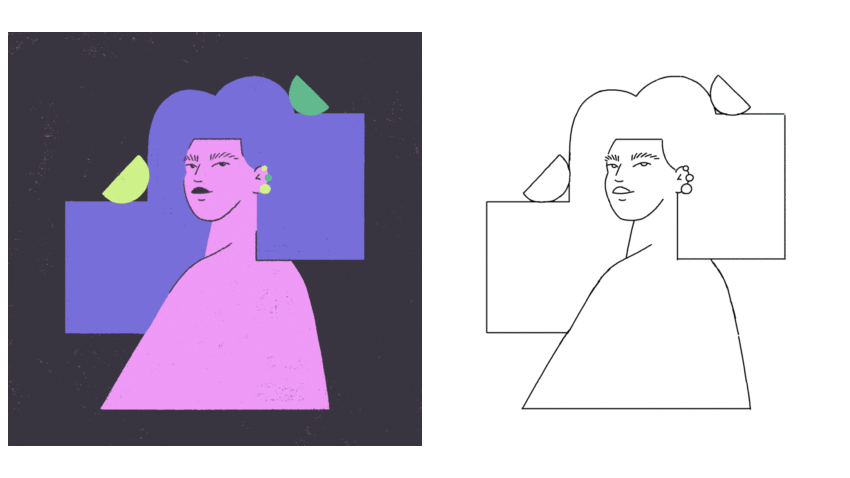 Your work, even when it’s not animated, has a sense of movement. I mean, I see one of your illustrations, and I can imagine how it would move. I’m not sure if that makes sense, haha.
Your work, even when it’s not animated, has a sense of movement. I mean, I see one of your illustrations, and I can imagine how it would move. I’m not sure if that makes sense, haha.
Yes, I love that! I really do. I think that once I learned a bit about animation, every time I went to draw something, I would think, “Oh, what if this moved?” So, I think it happened naturally. In the world of illustration, things are becoming more and more digital, so it makes a lot of sense to know how to, or be able to, make your illustrations move a little.
Yes, I’ve noticed that short animations by illustrators are in high demand now.
I think a simple animation can say just as much as a super complex one. There are programs that are really easy to learn, but yeah, it is a bit intimidating, to be honest.
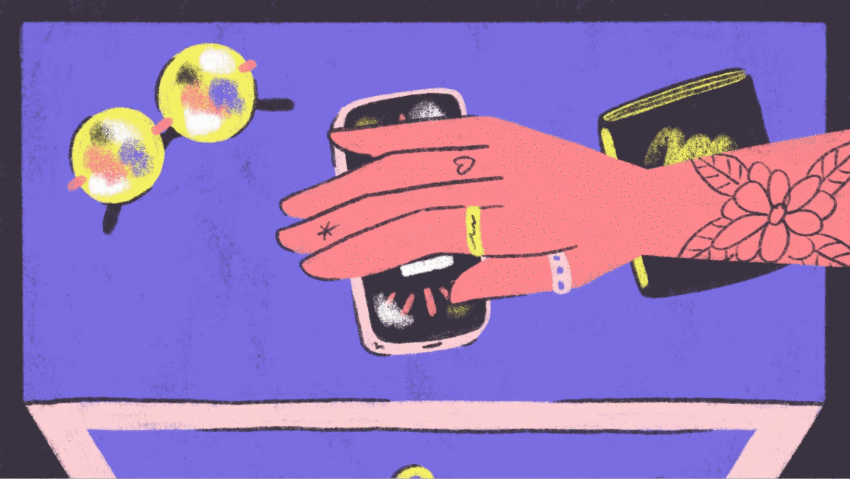
Identity, Inspiration, and Artistic Values
About your influences or artistic identity, who or what has inspired you to get to where you are? Because your style is very distinctive.
I consider my style very recent because, when I came to Barcelona and did the master’s, I was doing very different things. I had this idea of developing my own style, something I worked on for several years. I think it’s hard not to be influenced by trends, right? There was a time when the small head and big body trend was popular, and I went along with it. It was a matter of trying different things until I arrived at something that made sense. I went from super crazy proportions to something less exaggerated, partly because of client demands.
When it comes to other artists, I’m especially inspired by my colleagues from Latin America. I think we have incredible talent there: colors, textures… those things bring me so much inspiration, as well as traveling and more tropical elements.
I can see that entirely in your style, now that you mention it. I’ve also noticed that social movements like feminism and LGBTQ+ rights seem to inspire you a lot as well.
Yes, I think it’s something that has always been present in my work; as an artist, I feel it’s impossible to separate who I am as a person from the illustrations I create, so it’s important for me to show my identity and my values through my art. That’s why topics like feminism and social movements have always been part of my projects; they naturally influence not only the themes I explore but also the kind of jobs I’m hired for, which are often aligned with those ideas. Ultimately, it comes from a desire to illustrate not just my skills but also what I stand for and care deeply about; these themes are very intertwined with my creative process and appear frequently in my work.
I’ve noticed that in your work, the characters are always looking at the viewer, almost like maintaining eye contact. Why is that?
I think it started when I began drawing a lot of women. Before, I had this habit of drawing very large characters that took up a lot of space (I still do it, but less now). They used to look outward, and now, it’s something unconscious. I never think, “This person is going to look this way,” but I think it’s a sense of power, you know? Like…
Confrontation?
Yes, exactly, a confrontation with the person who is looking at it. In the end, it became something that’s always in my work. I don’t think about it much, but maybe it’s like a personal trademark.
I really like it, since the theme is feminism, it feels a bit challenging, you know? It gives me a sense of empowerment.
Yes, yes. I think it’s funny because you asked me, and I notice that when I talk to people… not for any particular reason, but when I’m thinking or talking, I look everywhere. I do the opposite of my characters, Hahahaha.
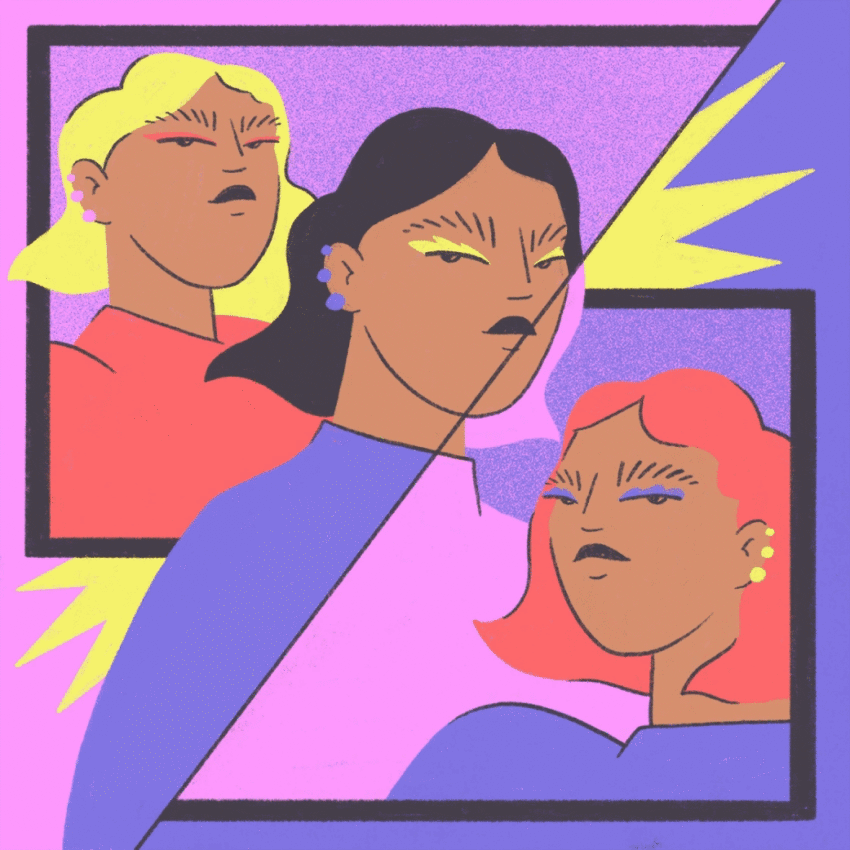
Creative Struggles and New Beginnings
As an artist, I understand that there are times when it’s hard to find inspiration. Personally, I struggle with that. I think it’s kind of a “pathology” that all creatives have. How do you get out of those slumps when you have a project with a deadline?
I just got out of a period of low inspiration a few months ago. I was feeling really unmotivated, with no ideas, kind of like going through an existential crisis. What helped me was talking to other creative people who go through the same thing. They would tell me things like, “It’s okay, it’ll come back. Don’t worry too much.” But when there’s a project and I have to do it, it helps me a lot to create pieces that are not for showing or publishing. I simply grab a notebook and do something completely different, like ceramics, for example. I go into it with no ideas, no projects, nothing, and it’s a way to get out of that pressure.
But yes, I think it happens to all of us. Especially when there’s a project with a deadline, you’ll do it. Something will come from somewhere. I think it’s harder when you don’t have anything to deliver. It’s like, “Okay, what do I do if I can do anything and I have no ideas?” In those cases, it helps to create a briefing just for yourself or, as I said, do something completely different that isn’t work. I think stepping away from the pressure of having to show and publish something very finished is key. Just start.
Yes, I understand. It could also be that the pressure of having to deliver “forces” you to come up with ideas out of nowhere in some way. Something always comes to mind in the end.
Exactly, and sometimes it happens that it won’t be your best project, but you still get it done. I think we’re very hard on ourselves, right? Sometimes the client is super happy and you’re not as much, but that’s okay.
There’s also the issue that, I don’t know if it’s happened to you, but there comes a point where you enjoy what you do so much that it just comes easy. It’s something just for you. But then, when it becomes work, there’s a sense of rejection. Not complete rejection, but you feel that drawing has become harder because you associate it with work and stress.
Yes, yes, yes. I always say that I used to draw for fun, it was my hobby, my relaxation activity. When I started working as an illustrator, it was a complete change. It was no longer relaxing. Yes, it’s fun, I like it, it’s amazing, but it’s work. It’s no longer my relaxation time. Even when I draw something for myself, with no work involved, I associate it with work because I think: “What if I post it on Instagram? What if I make it into a print?” I go into it with that mindset, and it’s a bit sad because you lose that… that passion.
That’s why I always want to learn something new, to replace that enjoyable activity a bit. Ceramics was a bit of that. I wanted to do something for fun, to relax, and it worked for a few years. Now I’m like, “Okay, now this is work too. So, what do I do now?” I think it’s normal, but yes, you do lose that part of enjoying it so much.
I completely understand what you’re saying. Also, I realized that when you draw knowing your audience and what they expect, you no longer have that creative freedom to do whatever you want. You have the target audience in your mind, you know? So you’re subconsciously drawing what you’re selling.
Yes, and I think we can fall into traps with that, you know? Because I felt like I was being very automatic, and I didn’t want to always do the same thing. I want to create new things, but there’s also that desire to keep delivering what people expect from me. So it’s like two sides: you want to keep delivering what people expect, and at the same time, you want to evolve and create new things.
Well, you kind of mentioned it at the beginning when I asked you about creative blocks, but when you start a project, is a brief your first step? Whether it’s for a client project or a personal one, where do you begin?
I think I have different approaches. With clients, if I receive a more specific brief with rules and limitations, I always start with a lot of sketches and ideas. I draw very quickly and jot down words that I associate with the project. I usually have a good sense of what’s going to work. With personal projects, on the other hand, I think it’s something much more unconscious, with less idea of where it’s going to end. Normally, they’re ideas I jotted down in my notebook at some point or a sketch I did. I think personal projects are much more accidental than planned.

You’ve mentioned it before, but I had one last question for you. You talked about it a bit at the beginning, but tell me: you like illustration, ceramics, making GIFs, and now you’re starting to tattoo.
Yes, yes. I think it was another existential crisis I had. I get a bit bored of doing the same thing all the time. Not necessarily in terms of themes, but materials. I like learning and feeling that moment when I’m not sure if I’m doing it right. I like adapting things I already know how to do, like drawing and painting, and transferring them to other techniques.
I think it all came from illustration. Animation, for example, was like this: “Okay, if I have an illustration, I want it to move.” I learned the basics, though I’m not the most amazing animator, but I developed my technique. With ceramics, something similar happened. I started during the pandemic because I wanted to get away from screens. At first, I thought, “It won’t be work, I don’t have to paint each piece.” But in the end, that’s what I liked, and I thought, “What if I put my illustrations on ceramics?” The tattoo thing was also something I had tried to learn before and gave up. Now I’ve picked it up again because I thought it would be really cool to put my drawings on people’s skin. It was a desire to do it all myself, to get out of the automatic mode and be a beginner at something.












